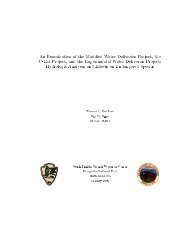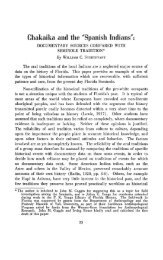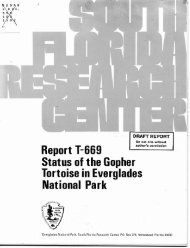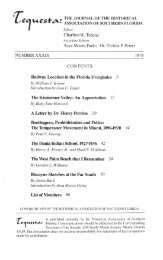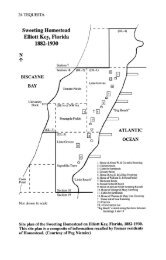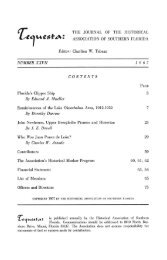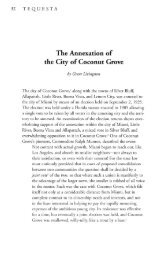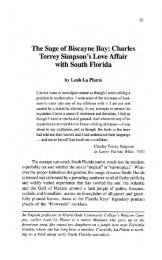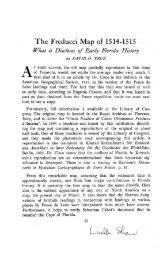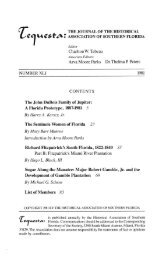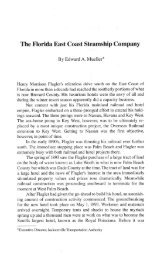Miami During the Civil War - FIU Digital Collections
Miami During the Civil War - FIU Digital Collections
Miami During the Civil War - FIU Digital Collections
Create successful ePaper yourself
Turn your PDF publications into a flip-book with our unique Google optimized e-Paper software.
<strong>Miami</strong> <strong>During</strong> <strong>the</strong> <strong>Civil</strong> <strong>War</strong> 45<br />
Blockade runners. (Historical Association of Sou<strong>the</strong>rn Florida, 81-93-6)<br />
Wagner and Nicholas Adams next set out for Key West in <strong>the</strong><br />
boat Adams built in <strong>Miami</strong>. They were cautious and first secured<br />
permission for <strong>the</strong> trip from Lieutenant Commander Earl English of<br />
<strong>the</strong> U.S. Gunboat Sagamore. This blockade ship patrolled <strong>the</strong> coast<br />
from Key West to Indian River. At Key West, Wagner and Adams<br />
also obtained authorization to take back provisions to <strong>Miami</strong> from <strong>the</strong><br />
commanding officer and from a "Captain Malloy." This considerate<br />
naval officer was W.D. Malloy, acting masters mate, commanding<br />
<strong>the</strong> U.S. Schooner Ariel, ano<strong>the</strong>r blockade vessel. His ship would<br />
capture a blockade runner in Biscayne Bay later in <strong>the</strong> war. 45 The<br />
Union forces only granted approval to load what <strong>the</strong>y thought necessary<br />
to sustain a single family for a short time. This policy gave <strong>the</strong><br />
settlers incentive to make unauthorized trips.<br />
Some chose to make regular runs between Nassau and Florida.<br />
Their ports in Florida ranged from Indian River on <strong>the</strong> east coast to<br />
Tampa Bay on <strong>the</strong> west coast, and <strong>the</strong> Yankees captured more than<br />
one runner sailing from Jupiter to Nassau. The absence of large ports<br />
and sizable population centers in sou<strong>the</strong>rn Florida, as well as <strong>the</strong> size<br />
of <strong>the</strong>ir vessels, suggests that <strong>the</strong>y were small-scale smugglers at best.<br />
Besides, <strong>the</strong>re was no practical land route to or from <strong>Miami</strong> and<br />
blockade runners could only sell <strong>the</strong>ir cargos locally. Never<strong>the</strong>less,



